The term solar light is explained by the term itself. It is the light we get as a product of power generated through sunlight. The main aim of using solar lights is to provide night light without consuming non-renewable sources.
During the daytime, the PV cells absorb solar rays’ energy. That energy is then converted to electrical energy by the same PV cells. Produced electrical energy is stored in small batteries mounted to the system to be used when it is dark.
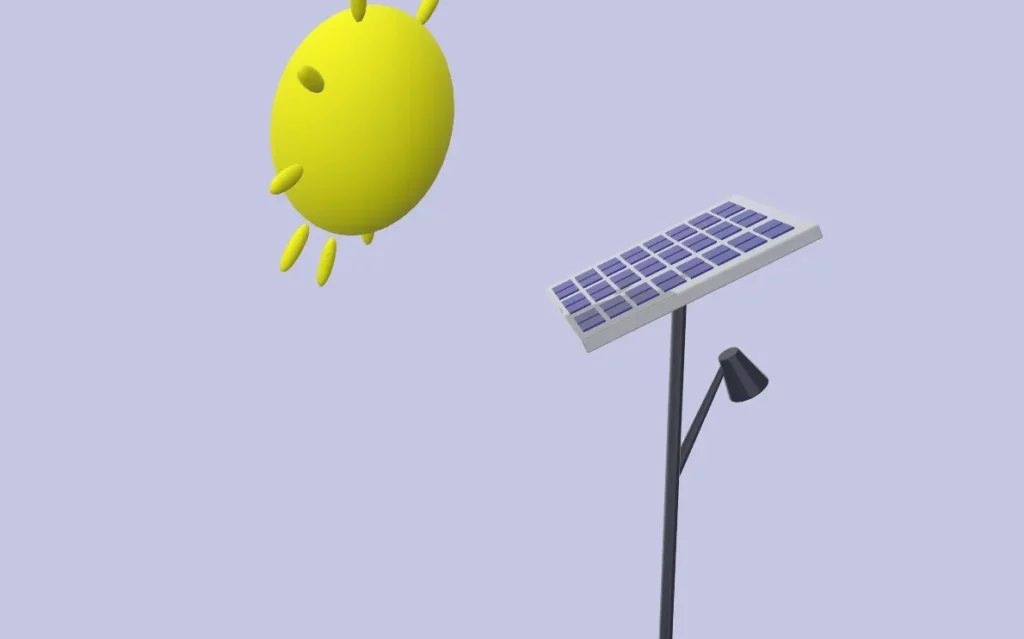
The details of circuit operation and relevant design files can be understood through research work done by U. E. Asuquo, et.al. relevant to the Construction and operation of a solar lighting system.
How does it work?
Solar cells have several layers of crystalline silicon and chemical which do have layers of negatively-charged electrons and positively-charged spaces.
The negatively charged electrons are excited and pushed into the positively charged regions as the sunlight travels through the solar cell.
So, the direct current is generated and transmitted to the battery where the electricity is stored. The battery keeps charging as long as the sunlight falls upon the solar panel.
When dusk falls, the solar cell stops converting light because the light gradually fades away and disappears.
The light, which is typically composed of many light-emitting diodes, is turned on by a photoreceptor on the light when it becomes dark (LEDs).
The light is then powered by the battery for the entire night.
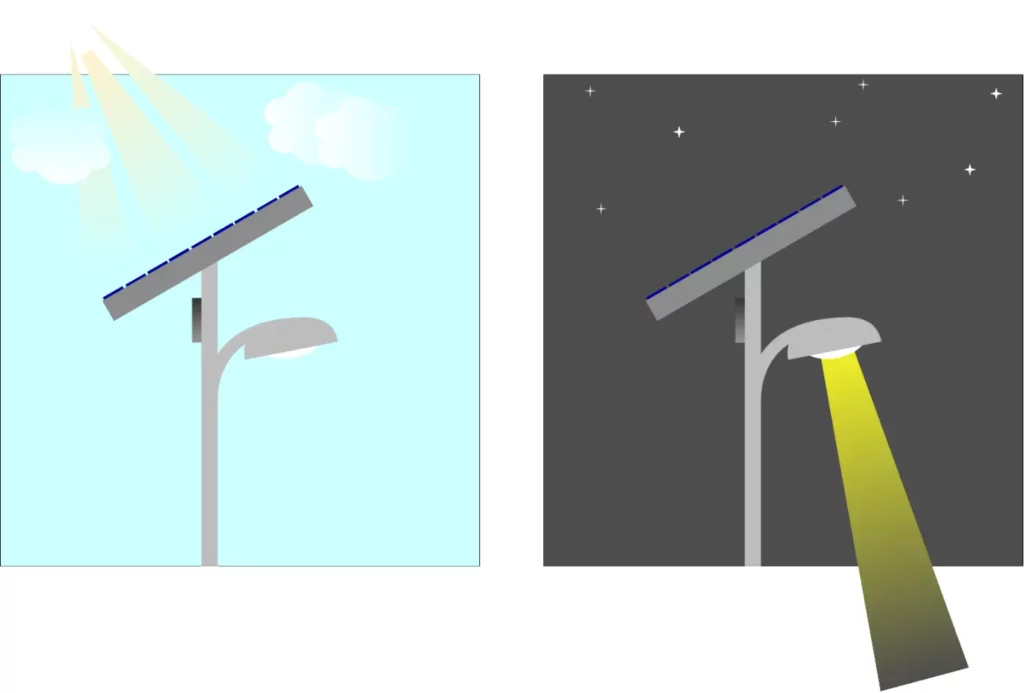
Components of solar light
Solar Panels
The solar panel is the energy-generating part of the solar light. It generates energy due to the photovoltaic effect. It should be properly angled to capture as many as solar rays possible. The amount of electricity generated is determined by the size of the solar cells.
Gi The panel will be exposed to weather changes and wind for years, so a balance between material strength and weight is required. Typically, solar panels last between 25 and 30 years.
Light Fixtures
Usually, the lighting here is given by an array of LEDs and has several types of designs. Quality fixtures are wired in a parallel configuration instead of a series.
Since LED lights with DC current, no conversion is expected in solar lights.
The other reason is that it consumes less energy compared to fluorescent and incandescent lamps.
These lights operate in a unique manner. While some of the lights include motion sensors, others have dimming settings depending on timers.
Rechargeable Battery
The main use of the battery is to store the energy generated in the daytime. Nowadays we can see either Lithium-ion batteries or LiFePO4 batteries in solar lights. Their light and compact design make them possible to use solar lights. Modern batteries could keep lit up even on cloudy rainy days due to their high storage.
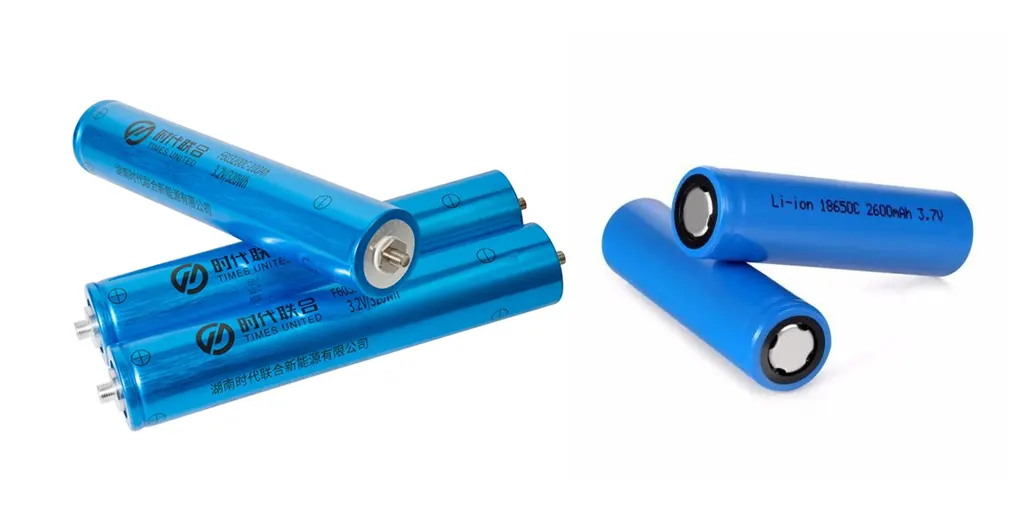
Controller
It is usually considered the brain of the system. The generated electricity gets stored in the battery via the controller. A controller protects the battery from overcharging or undercharging. When it is dark it is the controller which avoids the backflow of the electricity from the battery to the solar cells. The two types of charge controllers most frequently seen in solar street light units are PWM and MPPT.
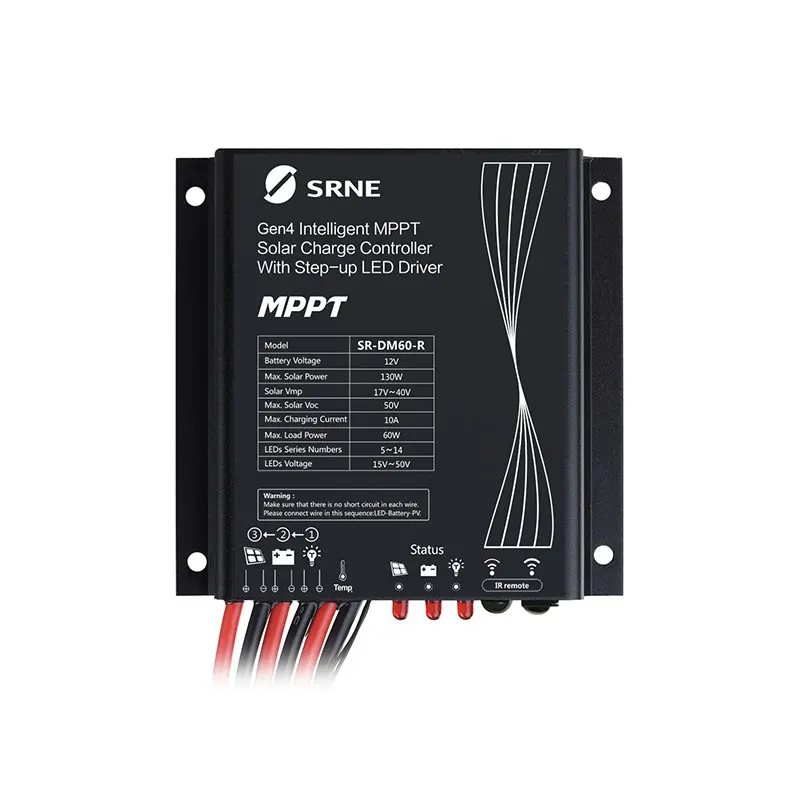
Interconnecting Cables
The power is transmitted through wires drawn between each component. In solar light, you can also find wire harnesses, fixture arms, mounting brackets, and other supplies.
Pole
Pole is the Part that supports the whole system. They are made with different sustainable materials to last at least 50 years.
Do we need an inverter?
It is quite obvious that we definitely install solar inverters at our homes, workplace, factories, and farms to use energy from solar panels.
That is because we will be using AC current there. The inverter converts the DC energy into AC.
But in solar lighting, the power generated in the solar cells is DC while the light fixture and batteries can use DC electricity.
So, you will not need that expensive inverter for solar lights.
However, if you are planning to use solar lighting for a whole building, the process may be complex and will require an inverter as well.
Sayan Kumar Nag, et al. published a good research work on nature explaining the process of design and conceptualization of a standalone solar light system to meet the energy requirements of a business complex.
I encourage you to read it if you were looking into more details regarding solar lights’ potential for large areas.
Advantages of solar lights.
- Cost-effective – the cost of the night light is the amount we have to spend on the source of energy; which might be fuel. But here the source itself is free. All the expenses are for battery replacements and maintenance.
- Environment friendly – since no fuel is burnt to generate electricity here there aren’t any harmful emissions at all.
- Safety –No wires are drawn like other street lights in the solar light system, and threats from strong winds are eliminated. Here there are fewer risks of fires and burns.
- Reliability – since these are working as single units no malfunctioning of one will affect the other. Even during maintenance, it can be repaired without affecting other lights.
- Less maintenance – The only real maintenance needed for solar lights is the occasional cleaning to remove obstructions from the panels and battery replacements. Every five years, traditional lighting fixtures (usually made of high-pressure sodium) need to be replaced.
- Remote applications – when it is hard to get power from the local grid one can easily set up a solar light system which is an independent unit.
LED solar lights are becoming more and more popular as alternatives to traditional lighting in marine environments. Due to the remoteness of boating and sailing, independent technology, such as solar boat lighting, are advantageous.
If you consider Solar lights with grid-powered conventional lighting systems you will see how beneficial this is.
| Solar Lighting | Grid-Powered Conventional | |
| Material Cost | high | medium |
| Installation Cost | low | high |
| Wiring And Trenching | low | high |
| Electricity Cost | almost none | high |
| Maintenance Cost | medium | medium |
Disadvantages of solar lights.
- High initial cost – usually installing solar lights costs more because they include a battery and a solar panel in each light post. They are the most expensive of all. But with the advantage of free energy, it can be compensated over time.
- Depends on the weather and climate – On horizontal PV panels, accumulations of snow, dust, and moisture can occur. The result is a decreased or complete halt of energy production. This is why solar street lights need to be examined occasionally, especially if they are installed in regions with harsh weather because it might harm the lights or limit their lifespan.
- Depends on the location – Not every place in the world gets enough sunlight to generate power. If you are in a tropical country, you may generate power with solar. Trees and shades will also reduce power generation.
We hope you are not from Barrow, Alaska, or Nunavut, Canada.
Interestingly, the sun does not rise for 30 consecutive days in these regions, so your solar lights will be of no use for these 30 days if you are from there.
- Theft risk – since there are valuable components like batteries and panels and as they are in every single unit, there is a risk of being stolen.
Does the performance of solar lights differ depending on the season?
The solar light would definitely need an adequate amount of sunlight to charge the battery. During the summer and spring, the process will happen in the usual manner as long as the panel receives direct sunlight and no shades of trees and buildings fall upon it.
However, a solar lamp may not be able to receive enough sunlight in the winter to fully recharge the battery and remain lit all night. This happens because there are fewer hours of sunlight to charge the battery during the winter. After all, days are shorter and nights are longer. Additionally, winter frequently brings snow, which might cover the solar cell and prevent daytime charging.
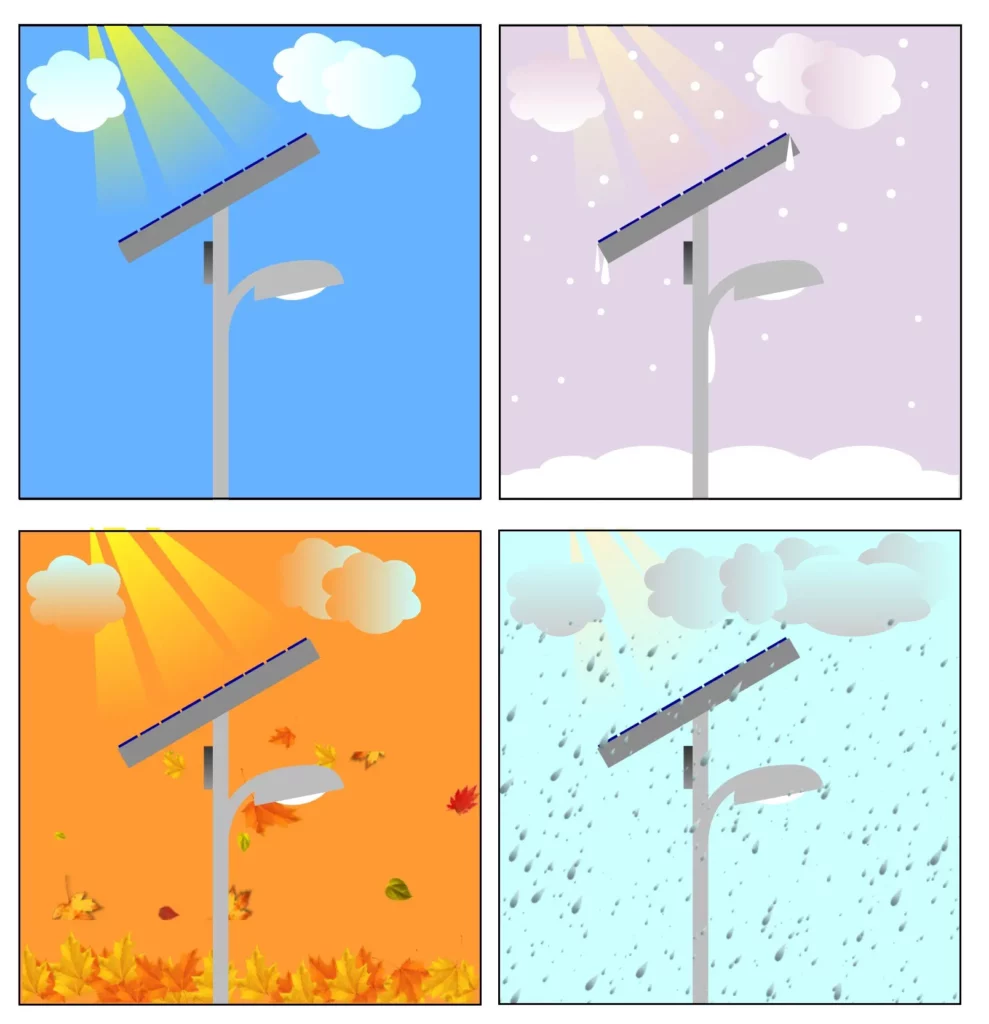
Today we have to think of more sustainable and green solutions for our requirements because we have limited resources. Solar lights are definitely a green option we can rely on to fulfill our lighting requirement with zero energy cost. Without any doubt, this will be a valuable investment worth considering.
REFERENCES
- [YouTube video]. (2013, February 6). Solar street light [Video]. Retrieved from https://youtu.be/3-C0mLHZfNQ
- Solar street light – Wikipedia. (n.d.). Retrieved February 6, 2023, from https://en.wikipedia.org/wiki/Solar_street_light
- Solar lamp – Wikipedia. (n.d.). Retrieved February 6, 2023, from https://en.wikipedia.org/wiki/Solar_lamp
- Pode, R., & Diouf, B. (2013). Solar lighting (Green Energy and Technology series). Springer London. doi: 9781447126812

Eng. Matthew Joseph Nandirio is the Founder of walkingsolar.
After graduating from the University of Houston in 2002, matt started working as a Solar Electrical Engineer for several multi-national solar energy companies.
He has a wide range of experiences including solar system requirement analysis, planning, maintaining, debugging and even solar device development through research.
He now shares his 20 years of expertise through his articles on the walkingsolar website.
Further, he is also the author of two books on Solar Technology, “Solar Power for Villages” and “DIY Solar System for Dummies”.

